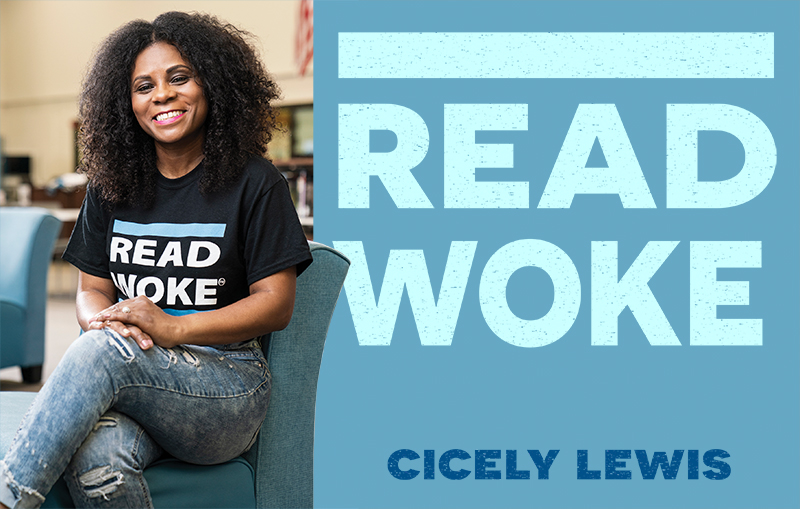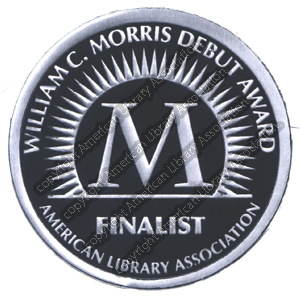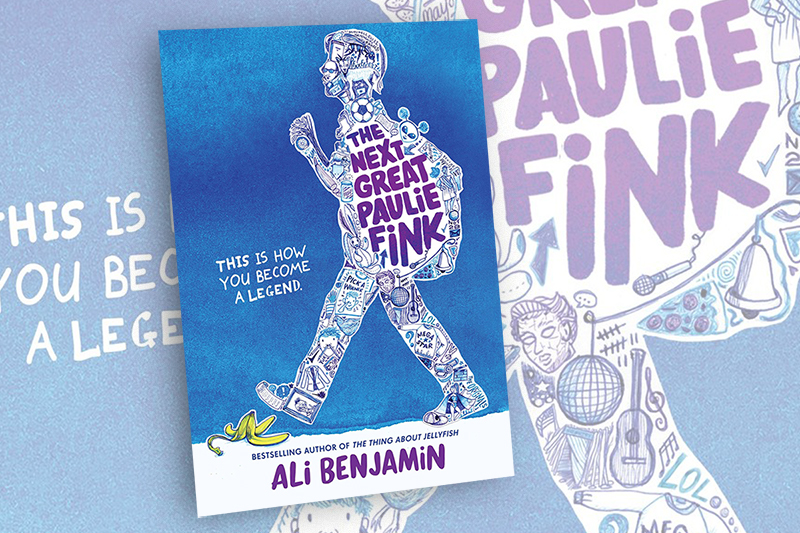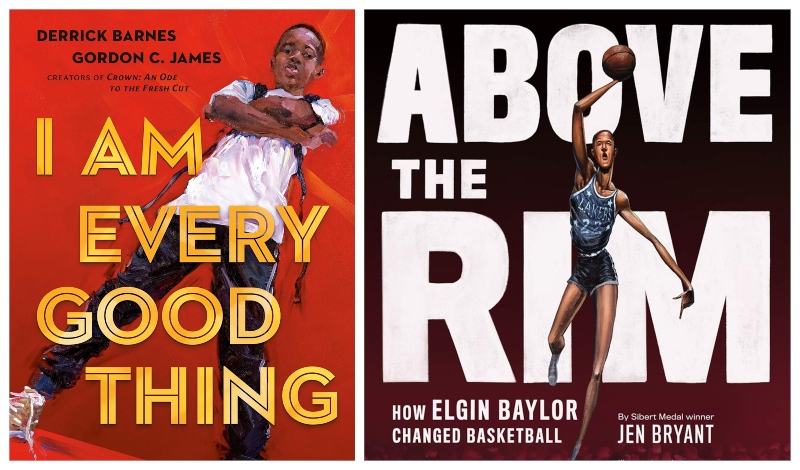All the Way to America
Teaching Invitations
- Family Objects. In Dan Yaccarino’s family, the shovel is a cherished heirloom. Read across some other texts that feature an immigrant bringing a cherished object to America. Next, have students discuss objects in their family that are important. What makes the object special? Did someone in the family make it? Did it come from somewhere special? Have students write a family story associated with the object, or the story of how they got it. Next, have them email you a digital photo of them with the special object. Use the narratives and photos to create a display in the hall or create a virtual museum online.
- Exploring the End Pages. Yaccarino created unique end pages for this book. The first pair of end pages contain a map tracing his great-grandfather’s journey from Sorrento, Italy to New York. The end pages at the back of the book are illustrated family portraits, snapshots of his family over time. On one bulletin board, mark on a world map all the places that represent the cultural and ethnic heritages of your students’ ancestors. On another bulletin, have each student bring in two pictures, one of their family now, and one of family members in the past.
- Dan Yaccarino’s Immigration Blog. Share your family story with Dan Yaccarino! You’ll find his All the Way to America blog in the Further Explorations section below.
- Family History. As a class, have students think about questions that they would want to ask Dan Yaccarino’s ancestors about their experiences. Use those questions to create general questions that your students could ask their parents, aunts, uncles, or grandparents. If family members aren’t available, perhaps elderly neighbors are. Students may want to record those interviews on smartphones or iPad2s. Have each student write a narrative based on the interview, and use either photographs or their own original creations as illustrations.
- Food and Community. Many immigrants open restaurants in the United States, as a way to share their culture, feed other members of their immigrant community, and preserve the food traditions with which they were raised. The author’s great-grandfather worked at an Italian bakery and as a pushcart peddler selling nuts. His son ran a market and a restaurant. Bring in menus from different restaurants in your community. How many different nations are represented? Are there other nations represented in the food within the menu? Have one or two local restaurant owners and/or chefs come in to class to discuss what inspires him/he to create the dishes on the menu.
- Coming to America. Adjusting to life in America was probably very difficult for the first Michael Yaccarino. Yet, the book does not reveal those challenges, and instead focuses on the ways in which the family moved from Little Italy in Manhattan, to the suburbs, and back to the city. Read Betsey Maestro’s The Story of Immigration, Russell Freedman’s Immigrant Kids, Raymond Bial’s Tenement or Deborah Hopkinson’s Shutting Out the Sky to see what specific challenges Italian immigrants, and others coming through Ellis Island at that time, might have faced at the turn of the 20th century. Ultimately, what is included and excluded? As a writer, what are some of the reasons why Yaccarino might have chosen to leave some of those challenges out? Was it because of the audience he was trying to reach?
Further Explorations
Dan Yaccarino’s Website
http://www.danyaccarino.com/ys/
Dan Yaccarino’s Immigration Blog
http://allthewaytoamericablog.blogspot.com/
The Statue of Liberty-Ellis Island Foundation Statue of Liberty Page
http://www.statueofliberty.org/Statue_of_Liberty.html
The Statue of Liberty National Park
http://www.nps.gov/stli/
Earth Cam View of the Statue of Liberty
http://www.earthcam.com/usa/newyork/statueofliberty/
Ellis Island National Park
http://www.nps.gov/elis/
Ellis Island (Non-profit associated with Ellis Island)
http://www.ellisisland.org/genealogy/ellis_island.asp
The History Channel
http://www.history.com/minisites/ellisisland/
Angel Island
http://www.angelisland.com/united_states_immigration_station/index.php
Angel Island Oral Histories
http://www.angel-island.com/
Library of Congress: Immigration Resources for Teachers
http://www.loc.gov/teachers/classroommaterials/themes/immigration/#
Digital History
http://www.digitalhistory.uh.edu/historyonline/ethnic_am.cfm
The Lower East Side Tenement Museum
http://www.tenement.org/
New York Public Library Immigration Images
http://digitalgallery.nypl.org/nypldigital/dgkeysearchresult.cfm?keyword=immigration
Books
- Set in Little Italy, New York, during the early 20th century, this fictional story highlights the struggle an immigrant father feels when his son takes a job as a lamplighter in his neighborhood.
- A photoessay of Ellis Island, its history, and the process immigrants experienced upon arrival.
- A photoessay of the Lower East Side Tenement Museum, which chronicles the experiences of some of the immigrants who lived at 97 Orchard Street in the late 19th and early 20th centuries.
- In this fictional picture book, the protagonist finally understands why his Italian-Amerian family celebrates the birthday of the Statue of Liberty each year.
- Kai must travel alone from China to the United States, becoming the fourth generation to make the trip; when he is told he must stay at Angel Island, he worries he may never join his father, an American citizen, in nearby San Francisco.
- This nonfiction book chronicles the different ways that immigrant children worked, played, and went to school in New York City in the late 19th and early 20th centuries.
- This nonfiction picture book tells of how Emma Lazarus, who grew up in a wealthy Jewish-American family in the late 19th century, was inspired to write the poem that became the inscription on the Statue of Liberty.
Hopkinson, D. (2005). Shutting Out the Sky: Life in the Tenements of New York 1880-1924. New York: Orchard Books.
- This nonfiction chapter book follows the lives of five immigrants who arrived in New York during the period explored. The book is arranged, not according to their lives, but by the chronology of their experiences as immigrants adjusting to life in America.
- This nonfiction picture book provides an overview of immigration history in the United States as well as specific information about the period of European immigration in the late 19th and early 20th century.
- A nonfiction picture book on Angel Island, the immigrant processing center in San Francisco Bay.
- A nonfiction picture book on Ellis Island, the immigrant processing center in New York Harbor.
- Like the Yaccarino family shovel, a homemade quilt, made from the clothing ancestors wore to America, in this fictionalized memoir is shared across generations.
- This multi-genre picture book consists of historical fiction verse vignettes featuring different perspectives on the construction of the Statue of Liberty.
- Instead of a shovel, this fictional picture book, based on family history, showcases two candlesticks that two sisters take with them from Russia to New York.
- Two cousins work together to ensure they successfully navigate Ellis Island after a long journey from Russia. Like the Yaccarino family’s shovel, a coat becomes the important family treasure.
- Two narratives are revealed concurrently across the two-page spreads of this picture book: the construction of the Statue of Liberty and the experiences of one family as they immigrate to the United States from Russia.
- A family faces many dangers as it immigrates to America from the Caribbean, arriving on Thanksgiving Day.
- A young boy and his parents leave everything behind in the Caribbean to immigrate to America; on their first day in America, a surprise snow storm allows each of them to marvel at their new life.
- A collection of poems that articulate the joys and sorrows of one young woman as she acclimates to life in the United States after leaving her home in Jamaica.
- Four verse poems, each based on a different season, as well as glorious paintings, reveal a young boy’s experiences adjusting to life in New York’s contemporary Chinatown.
- In this fictionalized account of the migration of Ethiopian Jews from Ethiopia to Israel in the 1980s and 1990s, Yuvi and her extended family confront dust storms and bandits on their journey to reconnect with her mother.
Filed under: Biography & Memoirs, Nonfiction Picture Books, Picture Books
About Mary Ann Cappiello
Mary Ann is a professor of language and literacy at Lesley University. A former public school language arts and humanities teacher, she is a passionate advocate for and commentator on children’s books. Mary Ann is the co-author of Teaching with Text Sets (2013) and Teaching to Complexity (2015) and Text Sets in Action: Pathways Through Content Area Literacy (Stenhouse, 2021). She has been a guest on public radio and a consultant to public television. From 2015-2018, Mary Ann was a member of the National Council of Teachers of English's Orbis Pictus Award for Outstanding Nonfiction (K-8) Committee, serving two years as chair.
ADVERTISEMENT
ADVERTISEMENT
SLJ Blog Network
2024 Books from Pura Belpré Winners
Passover Postings! Chris Baron, Joshua S. Levy, and Naomi Milliner Discuss On All Other Nights
Winnie-The-Pooh | Review
Parsing Religion in Public Schools
Crafting the Audacity, One Work at a Time, a guest post by author Brittany N. Williams
ADVERTISEMENT







